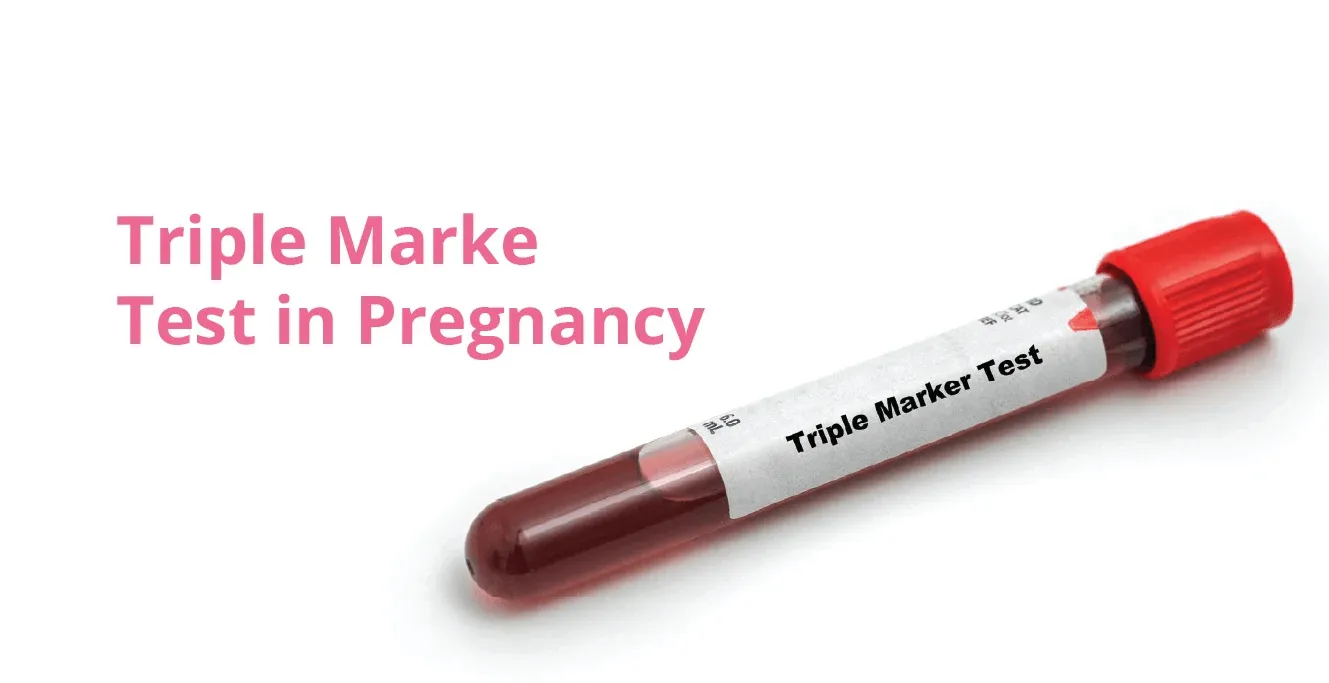
Semen Analysis Test: Normal Values, Procedure, Cost & Results

Table of Contents
- What is Semen Analysis?
- What is the Semen Analysis Test Normal Range?
- How is Semen Produced?
- Why is Semen Analysis Done?
- Preparing for a Semen Analysis:
- Semen Analysis Test Procedure
- What are the Risks Related to Semen Analysis?
- What Does the Semen Analysis Report Mean?
- What does an Abnormal Semen Analysis Report Indicate?
- Causes of Abnormal Results
- What Happens After the Test?
- How to Increase Semen Quantity Naturally?
- How Much Does Semen Analysis Cost?
- Dos and Don’ts of Semen Analysis
- Treatment Options for Male Infertility
- Conclusion
- FAQ’s
- What is the Normal Sperm Count to Get Pregnant?
- How Long Do Sperm Analysis Results Take?
- Can a Man With Zero Sperm Count Get a Woman Pregnant?
- How Do You Know if You Have Good Sperm?
- What Time of Day is the Highest Sperm Count?
- How can Semen Analysis Be Done At Home?
- Is a Home Sperm Test Useful?
- What is the Minimum Sperm Motility Required for IVF?
- What if a Person is Hesitant to Go Ahead With the Test?
- Can We Do Semen Analysis After Vasectomy?
Male infertility accounts for about 50% of the total infertility cases in India. Despite its alarmingly high incidence, male infertility issues are not widely discussed. It is primarily because of the gigantic stigma around male reproductive health that poor fertility in men means a lack of manhood. This misconception puts their masculinity in question, due to which fewer men seek medical help for their reproductive health issues. A test, as simple as a semen analysis, can help in timely and effective treatment.
It should be noted that infertility, like any other medical condition, is just a health concern. It does not define or undermine the vigour of any individual. With the growth of Assisted Reproductive Technology (ART) methods, awareness about male infertility issues is also rising. Today, numerous diagnostic and therapeutic methods are available to cure male infertility with complete confidentiality.
What is Semen Analysis?
Before we find out what a semen analysis is, let us study the basic biology behind the male reproductive system by understanding what semen is.
Semen is the thick, whitish fluid secreted by a man’s body (tip of the penis) when he ejaculates. The semen mainly contains three components –
- Sperm
- Fluids
- Proteins, vitamins & minerals
Sperm cells are healthy male reproductive cells containing genetic material. The sperm cells fertilise the mature egg in a female’s body and lead to the formation of embryos, hence helping a couple achieve a pregnancy.
A low sperm count can disrupt the process of fertilisation and contribute to male factor infertility.
A semen analysis test is a male fertility test that is done to analyse the quantity and quality of a man’s sperm in his semen sample. It is also known as the sperm count test.
Semen analysis test is performed under an advanced microscope in a lab and allows your fertility doctor to examine your semen for its count, motility (activity), shape, and overall health.
What is the Semen Analysis Test Normal Range?
Here are the details about the semen analysis normal range:
| Volume | 1.5-6 mL per ejaculate |
| Sperm concentration (count) | ≥ 15 million sperm/mL |
| Total sperm count | ≥ 39 million per ejaculate |
| Motility (progressive) | ≥ 32% moving forward |
| Total motility (progressive + non-progressive) | ≥ 40% |
| Morphology (normal forms) | ≥ 4 % normal shapes (strict criteria) |
| pH | 7.2-8.0 |
| Liquefaction time | ≤ 60 minutes |
| White blood cells (Leukocytes) | < 1 million/mL |
| Vitality (Live sperm) | ≥ 58% live |
How is Semen Produced?
A man’s reproductive system is designed to produce, store, and transport sperm. The male reproductive organs are on both the interior and exterior of the pelvic cavity, including the testicles, the duct system: epididymis and vas deferens (sperm duct), and the accessory glands: seminal vesicles and prostate gland, and the penis.
The production of semen occurs in the testicles. There is a system of tiny tubes in the testicles called seminiferous tubules. They house the germ cells that hormones, including testosterone (the male sex hormone), cause to turn into sperm. The germ cells divide and change until they resemble tadpoles with a head and a short tail.
The tail pushes the sperm into the epididymis. The sperm travel through the epididymis for around five weeks, completing their development. After that, the sperm move to the vas deferens. When a man is stimulated by sexual activity, the sperm are mixed with seminal fluid (a whitish liquid produced by the seminal vesicles and the prostate gland) from semen. As a result of the stimulation, the semen is pushed out of the penis through the urethra.
Why is Semen Analysis Done?
There are a few reasons why a doctor may suggest a semen analysis:
- To check if a man is fertile and can father a child
- To find out if there are any problems with the sperm that may be causing infertility
- To see if a vasectomy (surgery to stop sperm from leaving the body) has worked
The test looks at different things about the sperm, like:
- How many sperm are there (sperm count)
- How many sperm are there in each milliliter of semen (sperm concentration)
- How well the sperm are moving (sperm motility)
- The shape and size of the sperm (sperm morphology)
- How much semen there is (semen volume)
- How acidic or alkaline the semen is (semen pH)
- How long does it take for the semen to become liquid after ejaculation (liquefaction time)
Preparing for a Semen Analysis:
Before you do a semen analysis, there are a few things you need to do to make sure the results are accurate:
- Don’t ejaculate for 2 to 7 days before the test. Your doctor will tell you exactly how long to wait.
- Wash your hands and penis well before collecting the sample. This helps avoid getting bacteria from your skin into the sample.
- Pee before collecting the sample to lower the chance of contamination.
- Use a clean container given to you by your doctor to collect the sample.
- Don’t use any lubricants or spit, as these can change the test results.
- Keep the semen sample close to body temperature and get it to the lab or clinic within 1 hour of collecting it.
Semen Analysis Test Procedure
The semen analysis test procedure helps evaluate male fertility by examining the quality and quantity of sperm in a sample. Here’s how the process works:
Collection
The first step is to collect the semen sample. You can do this at home or at the clinic, but make sure to follow the instructions given to you by your doctor. Collect the sample right into the clean container.
Preparation
Once you have the sample, take it to the lab. They’ll let it sit for 20-30 minutes so it can turn into a liquid. Then, a lab technician will wash the semen and put a small amount on a microscope slide.
Examination
The lab technician will look at the semen sample under a microscope. They’ll check things like how many sperm there are, how well they’re moving, what shape they are, how much semen there is, and how acidic or alkaline it is. They may also look at the chemical makeup of the semen and how long it takes to become liquid. As part of the preparation, a sperm wash technique may be performed to separate healthy, motile sperm from non-motile sperm.
Analysis of the report
After the examination, the lab technician will give a detailed report on what they found. Your doctor will look at these results to see if there are any fertility problems.
What are the Risks Related to Semen Analysis?
Semen analysis is a safe test. It does not have any potential risk factors. You should ensure that you are in good health (not ill and stressed) while submitting the sample.
What Does the Semen Analysis Report Mean?
For each individual, the result of a semen analysis report would have a different interpretation. The semen analysis normal report would vary depending on the purpose or indication of the test. If the semen analysis is indicated to test vasectomy success, normal test results would show zero sperm count or very few moving sperm cells. On the other hand, abnormal test results would mean high numbers of moving or non-moving sperm.
If it is indicated to test infertility, the semen analysis normal report is drawn based on the following factors:
- pH level
- Semen volume
- Sperm concentration
- Sperm morphology
- Sperm motility
- Vitality
- White blood cells
Semen Test Results
The above-mentioned characteristics are tested against expected values to examine the results of semen analysis.
- Sperm concentration – As per the World Health Organisation (WHO), your sperm count should be at least 15 million sperm per millilitre of semen.
- Sperm motility – Your sperm motility (activity) should be 50%, meaning that at least half of your sperm cells should be active.
- Sperm morphology – The shape and size of the sperm (morphology) are also analysed. Research suggests that at least 4% of your sperm cells should be normally shaped.
- Semen volume – Your fertility doctor will also test if you are able to produce enough semen. Ideally, you should be able to ejaculate at least 1.5 millilitres of semen.
- pH level – Your semen should not be too acidic. The pH level of your semen sample should be between 7.1 to 8.0.
- Liquefaction – Normally, semen comes out as a thick ejaculate and later becomes liquid. The time taken for the semen to become thin in a liquid form is called the liquefaction time. Liquefaction time is ideally 20 minutes.
- Semen fructose – Semen analysis also measures semen fructose levels, which are contributed by the seminal vesicles. If no sperm are found in the semen, fructose levels are checked to identify obstructions.
- Appearance – Semen fluid is usually greyish and opalescent. If your semen sample has a red tint, it indicates the presence of blood, while a yellow-tinted sample may indicate jaundice.
What does an Abnormal Semen Analysis Report Indicate?
An abnormal semen analysis report indicates a poor chance of getting the female partner pregnant. However, it should be noted that a semen analysis is not the only factor in evaluating male factor infertility. Abnormal semen analysis reports may indicate infertility, infection, hormonal imbalance, underlying diseases (diabetes), and genetic defects. Semen analysis results also vary with the individual’s age and overall health.
Your fertility doctor will indicate additional testing and screening to confirm or rule out other conditions, including:
- Blockages preventing the release of sperm into semen
- Infection
- Low sperm count
- Low testosterone levels
- Hormonal difficulties
- Side effects of certain medications
If you receive an abnormal semen analysis report, your fertility doctor may recommend additional tests, including:
- Sperm antibodies
- Sperm penetration assay
- Hemizona assay test
- Cervical mucus penetration test
Causes of Abnormal Results
- Low Sperm Count (Oligospermia): May be caused by varicocele, genetic diseases, hormonal imbalances, or long-term illnesses.
- No Sperm (Azoospermia): Testicular failure, genetic disorders, or obstructions in the reproductive system can result in azoospermia, or the absence of sperm.
- Asthenozoospermia: Also known as low sperm motility, Asthenozoospermia is frequently associated with oxidative stress, lifestyle choices (such as smoking or drinking), or infections.
- Abnormal Sperm Morphology (Teratozoospermia): The form of sperm can be impacted by genetic flaws, exposure to toxins, extreme heat, or specific drugs.
- Low Semen Volume: Hormonal problems, frequent ejaculation, or occlusion of the ejaculatory duct can all result in low semen volume.
- Elevated White Blood Cells: Indicates reproductive system inflammation or infection.
- pH Imbalance: An imbalance in pH could be a sign of an infection or issues with the prostate or seminal vesicles.
- Lifestyle Factors: Semen quality can be impacted by stress, obesity, poor diet, and exposure to environmental pollutants.
What Happens After the Test?
After your semen analysis, your doctor will review the results and discuss the next steps, which may include lifestyle changes, further testing, or fertility treatments if needed.
Reviewing the Report
Once the lab completes the analysis, your doctor will go through the report with you. They’ll explain key factors like sperm count, motility (movement), morphology (shape), and overall semen quality. If any irregularities are found, they’ll discuss what they mean and whether further tests are needed.
Consultation and Recommendations
Based on the results, your doctor may suggest lifestyle changes, medications, or supplements to improve sperm health. If the analysis indicates fertility challenges, they might recommend assisted reproductive techniques such as:
- Intrauterine Insemination (IUI): Placing sperm directly into the uterus to improve the chances of fertilisation.
- In Vitro Fertilisation (IVF): Retrieving eggs and fertilising them with sperm in a lab before implanting them in the uterus.
- Intracytoplasmic Sperm Injection (ICSI): A single sperm is injected into an egg to help with fertilisation, often used for severe male infertility.
Follow-Up
If treatment is needed, your doctor may suggest lifestyle modifications or repeat semen analysis after a few weeks or months to track improvements. Regular follow-ups help adjust the treatment plan and ensure the best possible outcome.
How to Increase Semen Quantity Naturally?
If you receive abnormal semen analysis results that indicate low sperm count, you may want to quickly resolve this issue. There are some home remedies and handy tips you can use to boost your sperm count.
Here’s how to increase semen quantity naturally:
- Exercise regularly – Doing some form of physical activity each day for about 30-40 minutes can help boost testosterone production and lead to an increased sperm count.
- Avoid or quit smoking – Smoking cigarettes negatively impacts your fertility by reducing the sperm count.
- Drink in moderation – Alcohol consumption also hinders your fertility by affecting your sperm health. Avoid heavy drinking or drink in moderation.
- Consider fenugreek – Fenugreek supplements are known to promote sperm quality and sperm count.
- Enough Vitamin D – Research suggests that increasing your intake of Vitamin D can also boost sperm health.
- Add antioxidants to your diet – Antioxidants are popular for their ability to deactivate compounds that contribute to cell damage. Eating antioxidant-rich foods can boost sperm production.
- Know your fats – You should cut down on unhealthy fats and increase your consumption of healthy fats.
- Have a nutrient-dense diet – Increase your intake of diverse nutrients, including folate, zinc, vitamins, and minerals.
How Much Does Semen Analysis Cost?
In India, a semen analysis usually costs between ₹600 and ₹1,000, but it can be different based on the factors listed below:
- If you need any extra tests, it can make the overall cost higher.
- The equipment and facilities used by the clinic can affect the price.
- Clinics in cities or ones with a good reputation may charge more.
- The expertise and reputation of the doctor can also change the cost.
Dos and Don’ts of Semen Analysis
To make sure the results of your semen analysis are accurate and reliable, here are some important things to do and not to do:
Dos:
- Follow your doctor’s specific instructions about medication or lifestyle changes before the test.
- Stay hydrated, but avoid excessive caffeine or alcohol, which may affect sperm quality.
- Get enough sleep and reduce stress, as both can impact sperm health.
- Inform the lab if you’ve had a recent fever or illness, as this can temporarily lower sperm count.
- If collecting at home, transport the sample in an insulated bag to maintain temperature.
Don’ts:
- Avoid excessive heat exposure (e.g., hot tubs, saunas) for a few days before the test.
- Don’t smoke or use recreational drugs, as they can negatively affect sperm quality.
- Avoid high-intensity exercise right before the test, as it may impact results.
- Don’t store the sample in extreme temperatures (too hot or too cold) while transporting it.
- Don’t delay retesting if advised, as sperm quality can change over time.
Treatment Options for Male Infertility
Surgery: Vasovasostomy or vasectomy reversal restores blocked or damaged reproductive ducts, while varicocelectomy repairs varicoceles.
Techniques for Assisted Reproduction (ART):
- During intrauterine insemination (IUI), treated sperm are put straight into the uterus.
- In vitro fertilisation (IVF) involves fertilising eggs in a lab and implanting the resulting embryos into the uterus.
- A single sperm is injected into the egg using intracytoplasmic sperm injection (ICSI), which is helpful in cases of severe male factor infertility.
Techniques for Sperm Retrieval: Sperm can be taken straight from the testes or epididymis in males who have azoospermia.
Conclusion
Semen analysis is an advanced diagnostic test that allows your fertility doctor to analyse the quantity and quality of the semen. When a man is unable to help the female partner achieve pregnancy, a semen analysis test can help in detecting the underlying cause of male factor infertility.
FAQ’s
What is the Normal Sperm Count to Get Pregnant?
The normal sperm count in a single ejaculate should contain at least 15 million sperm per millilitre. If your sperm count is lower than the expected number, you may be experiencing a male factor infertility issue.
How Long Do Sperm Analysis Results Take?
The sperm analysis test report will take a few days to arrive. You may be asked to submit more than one semen sample for precise analysis.
Can a Man With Zero Sperm Count Get a Woman Pregnant?
Men with zero sperm count can seek fertility treatments and Assisted Reproductive Technology (ART) methods to get a woman pregnant. Common methods include fertility medication such as hormone-inducing medicines, and surgery.
How Do You Know if You Have Good Sperm?
You have good sperm cells if you have a sperm count of about 15 million or more for every milliliter (mL) and good sperm motility and morphology of about 50% of sperm cells.
What Time of Day is the Highest Sperm Count?
Sperm count is highest in the morning due to prolonged abstinence.
How can Semen Analysis Be Done At Home?
Semen analysis at home can be done using FDA-approved home testing kits that measure sperm count and motility. However, for a complete evaluation of morphology, vitality, and infections, a lab-based test is recommended.
Is a Home Sperm Test Useful?
Yes, a home sperm test can be helpful for some patients. However, the results are limited compared to lab test results. Lab tests offer a detailed diagnosis and the root cause of the condition.
What is the Minimum Sperm Motility Required for IVF?
Despite the fact that pregnancies can be achieved with lower parameters, IVF or insemination therapy requires at least 10 × 10⁶ spermatozoa/mL, of which at least 30% are motile and 15% have progressive motility. At least 20% of the sperm should have a regular shape and size.
What if a Person is Hesitant to Go Ahead With the Test?
Have an in-depth conversation with your fertility expert. Explain reasons for not wanting to do the tests, as it is important to undergo the test to determine sperm related causes of infertility.
Can We Do Semen Analysis After Vasectomy?
Yes, semen analysis is routinely done after a vasectomy to confirm the absence of sperm. Multiple tests over several weeks are usually required to ensure the ejaculate is completely sperm-free before considering the procedure fully effective.
Our Fertility Specialists
Related Blogs
To know more
Birla Fertility & IVF aims at transforming the future of fertility globally, through outstanding clinical outcomes, research, innovation and compassionate care.
Had an IVF Failure?
Talk to our fertility experts

 Our Centers
Our Centers
















